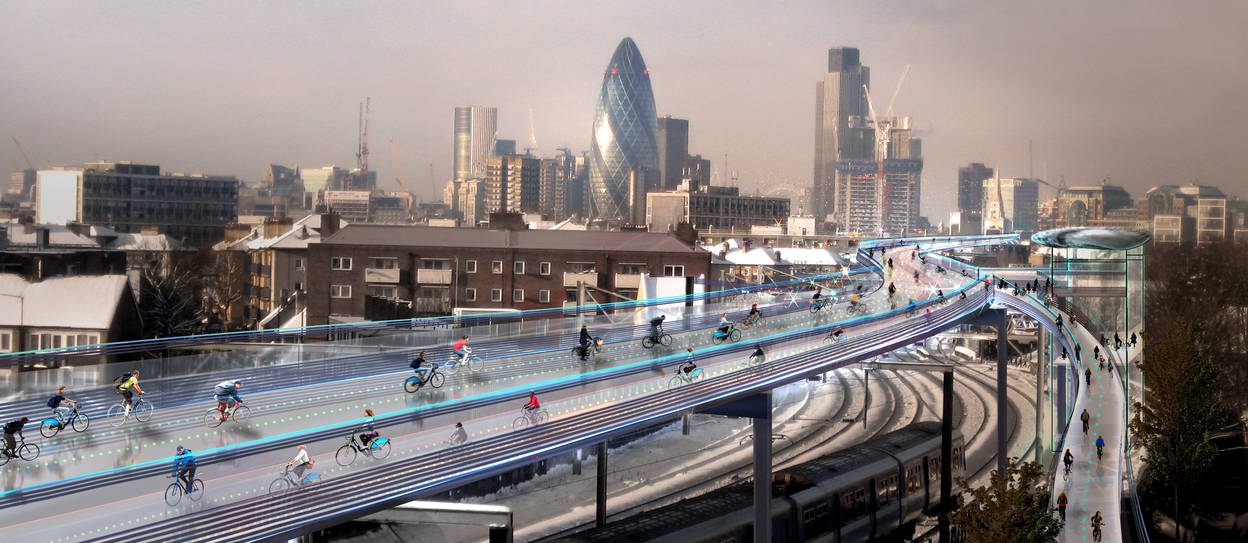Norman Foster, Lord Foster of Thames Bank, head of high-tech architectural firm Foster & Partners, one of the most prolific architects of his generation, and designer of London’s famous ‘Gherkin’, unveiled his concept to make the capital safer for cyclists, following the deaths of fourteen bicycle riders on the city’s streets during 2013.
Called ‘SkyCycle’, the utopian design proposed by Foster & Partners, landscape architects Exterior Architecture and transport consultants Space Syntax, suggests building 220 km of car-free cycle lanes above existing rail routes and tracks.
Ten different cycle paths are proposed, giving access to all parts of the city. Each route will be designed to accommodate up to 12,000 cyclists per hour and, with 200 entry-ways spread throughout the capital, it’s estimated that journey times could be improved by up to thirty minutes.
A regular cyclist, and president of Britain’s National Byway Trust, Mr Foster said that SkyCycle is his team’s “…lateral approach to finding space in a congested city.” He went on to add that “…using the corridors above the suburban railways, we could create a world-class network of safe, car free cycle routes that are ideally located for commuters.”
If the project is approved, it’s said that the pathways could be in place within the next two decades. This should give some relief to London’s strained transport network, which has been working at and beyond capacity for some time, yet is still expected to contend with a predicted 12% population increase over the next ten years.
Mr Foster believes that cities where walking or cycling is recommended over driving are more congenial places to live, but that to encourage a new generation of cyclists the roads need to be made safer. The biggest barrier in segregating cars from bicycles is that road space in London is at a premium, and there’s nowhere left to go but up.
The designers of SkyCycle are adamant that construction of the elevated cycle paths would be considerably less expensive than building new roads or tunnels. The pathways will also offer more health benefits to Londoners and are a far more efficient use of space, as well as possibly persuading more car owners to cycle to work instead of driving.
Space Syntax director Anna Rose explained that “At crucial points in London’s history, major infrastructure projects have transformed the fortunes of the capital,” citing Bazalgette’s sewer system, that helped remove the threat of cholera from the city, and the London Underground, which enabled longer-distance commuting. She equated SkyCycle with these advancements, saying it was “…conceived in this tradition… with all the social, economic, environmental and health benefits to London that follow.”
The need for SkyCycle was highlighted by doubts about the safety of cyclists in London. Six cyclists where killed in road accidents over a two-week period in November, 2013, which brought the year’s total up to fourteen. BBC News ran a poll and discovered that 20% of London cyclists ceased taking their bikes to work after these accidents.

